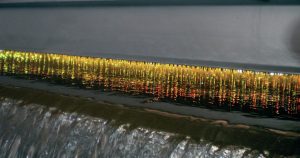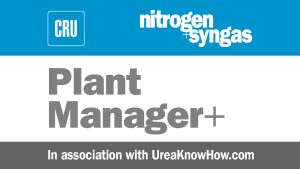
Fertilizer Industry News Roundup
CF Fertilisers UK is to permanently close its fertilizer production site at Ince in north west England with the potential loss of 238 jobs.

CF Fertilisers UK is to permanently close its fertilizer production site at Ince in north west England with the potential loss of 238 jobs.

It is generally necessary to solidify sulphur into a robust form suitable for handling and long-distance transport. Granulation, pastillation and prilling are some of the technologies used to produce solid sulphur from molten material. Similar technologies are also used to manufacture sulphur fertilizers.

New research findings strongly suggest that iodine behaves as a plant nutrient. SQM International has been quick to follow up on this discovery by launching a new speciality iodine fertilizer for fertigated crops.

In a major blow to the British fertilizer industry, CF Fertilisers UK announced the closure of its Ince production site in north-west England in June (see p8). Ince is the UK’s largest compound fertilizer producer, operating three NPK+S units. It also manufactures large volumes of ammonium nitrate (AN) for Britain’s farmers. At the heart of the Cheshire complex is Ince’s long-standing ammonia plant. Unfortunately, high natural gas costs have kept this shuttered since September last year.

Casale has acquired Hong Kong-based Green Granulation Ltd (GGL), and its proprietary technologies for the design and construction of urea and calcium ammonium nitrate (CAN) granulation systems. Casale says that the takeover is part of a broader strategy aimed at strengthening its leading position in the nitrogen market by leveraging the widest integrated portfolio of efficient technologies, enabling the company to offer a ‘one stop shop’ for the entire production cycle of nitrogen-based fertilizers, from raw materials to final products. GGL’s addition to the Casale group includes the Cold Recycle Granulation process, an advanced fluidised bed technology designed to accept a lower concentration of urea feed melt (ca 96% urea and biuret), as well as a proprietary design for both granulator and scrubber, a team of experts and qualified technicians, and considerable experience in several industrial references. The CRG design has a horizontal layout, leading to lower structural costs and higher efficiency, as well as lower total investment costs and power consumption, lower power consumption and simplified operation, and higher operational flexibility in urea and CAN granulation.

Leaks in the high-pressure synthesis section of a urea plant may lead to catastrophic consequences. In 2017, building on an incident database set up by UreaKnowHow.com, AmmoniaKnowHow.com and UreaKnowHow.com introduced FIORDA, the Fertilizer Industry Operational Risk Database, a global open source risk register for ammonia and urea plants.

Spot ammonia prices made steep losses in west of Suez regions following the $200/t drop in the Tampa May contract price in late April, as supply and demand start to rebalance two months after the removal of Black Sea ammonia exports from the market. Yara has settled the Tampa contract price for May with Mosaic at $1,425/t c.fr, a $200/t drop from April.

Maire Tecnimont has announced the resignation of Pierroberto Folgiero from the positions of Director, Chief Executive Officer and Chief Operating Officer of the Company, effective from May 15, 2022. Interim appointments to senior positions are subject to article 2386 of the Italian Civil Code, with a list drawn up at the time of appointment. However, with designated successor Alessandra Conte unwilling to accept the position, it has passed to Alessandro Bernini, previously Group Chief Financial Officer of the company since 2013, who will now also become the new Chief Executive Officer and Chief Operating Officer of Maire Tecnimont. The company board has also conferred on Bernini executive powers for the management and coordination of the Group's activities. The resolutions will be effective from 15 May 2022. Alessandro Bernini will remain in office, according to the law, until the next shareholders' meeting of the Company.

Gidara Energy has agreed with the Port of Rotterdam to develop a new waste to methanol facility in the Netherlands: Advanced Methanol Rotterdam (AMR). Gidara will duplicate its Advanced Methanol Amsterdam project as a template for AMR, using Gidara’s patented high temperature Winkler (HTW® ) technology, which converts nonrecyclable waste to renewable fuels. This technology has been used commercially in four other waste to syngas production facilities. AMR will convert around 180,000 t/a of non-recyclable waste into 90,000 t/a of methanol, while capturing all waste streams for use; CO2 will be captured and led to local greenhouses; bottom product residue will be used for cement production; and other streams like ammonia and salts will be sold and put to use as feed stock for other industries and road salt respectively, creating a fully circular concept. The facility is scheduled to start detail engineering and construction in the first half of 2023, when a permit is received, and start production of renewable methanol in 2025.

Yara and Mosaic shocked markets with a settlement of $1,625/t c.fr for April, up $490/t on March, and the highest ever price recorded at Tampa, as the removal of Russian and Ukrainian ammonia supply impacted global prices, and Baltic rates soared to $1,500/t. However, April saw some of the global dislocations caused by the Russian conflict begin to ease, while the high prices saw buyers in the US delay purchases, leading to the Tampa price falling back $200/t for May loadings.